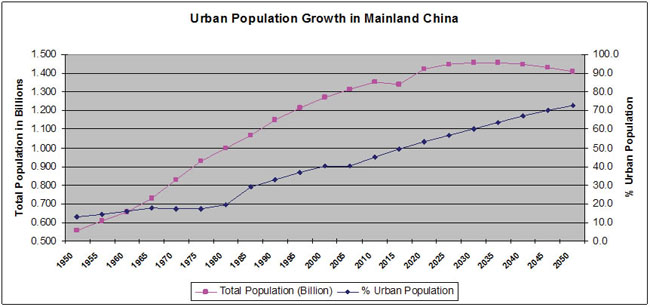Economic development in China over the last couple of decades has created environmental problems, particularly air quality, water quality and waste. China publishes annual reports on the state of its environment. The latest one (Ministry of Environmental Protection of the People's Republic of China, 2009) describes the status of the environment in China in 2008 and the measures and actions that the country undertook to combat pollution. In general, surface water across China was still heavily polluted; while urban air quality and acoustic quality was good and acid rain distribution areas remained stable in 2008. Surface water quality standards in China are divided into 5 grades, Grade I being the best and Grade V being the worst water quality. Air quality standards in China are divided into 3 grades. Grade I being the best and Grade III being the worst.
Reading 1.4
Ministry of Environmental Protection of the People's Republic of China (2009) Report on the State of the Environment in China 2008, pp. 3–15 and 21–28:
http://english.mep.gov.cn/down_load/Documents/ 201002/P020100225377359212834.pdf
- Pages 21–24: Atmospheric environment
The amount of acid rain is a measure of air pollution. In 2008, acid rain was concentrated in the region south to Yangtze River and east to Sichuan and Yunnan, most of Hunan and Chongquing as well as the Yangtze River delta and the Pearl River delta.
- Pages 25–26: Acoustic environment
New noise standards such as Environmental Quality Standard for Noise, Emission Standard for Industrial Enterprises Noise at Boundary and Emission Standard for Community Noise went into effect as of 1 Oct 2008.
- Pages 27–28: Solid waste
The amount of hazardous waste reached over 13 million tons and about 8 million tons were comprehensively utilized, 2 million tons stored and 4 million tons disposed of.
Upon reading these pages, you should have a better understanding of China's water, atmospheric and acoustic environment as well as its solid waste status in 2008.
One issue that will put tremendous pressure on environmental quality from now till the mid-21st century in China is urbanization. Please see the following animation about urbanization in China.
Urbanization in China
According
to the Report
on the Development of Chinese Cities 2008 issued
by the China Mayors Association, 666.7 million Chinese lived in 655 cities in 2008, representing 45.68% urbanization. Figure 1.3 shows the United Nation's data on population growth in China, and the
percentage of urban population. You can see that by the year 2015, 50% of the Chinese population are expected to reside in cities. By 2045, urbanization may reach 70% with the urban
population reaching 1 billion.

Do you know the problems that are caused by urbanization, and how they affect the environment? With more and more people migrating from the countryside to cities to look for employment and to improve their quality of living, the cities are under tremendous pressure to create jobs and housing for these people. Most cities are lagging behind in providing the needed environmental infrastructure to accommodate these migrants, resulting in inadequate storm water drainage, waste water treatment and solid waste treatment facilities. If you are interested in finding out the impact of urbanization in China, we suggest you read the McKinsey Report (McKinsey Global Institute 2009). It tells you about China's infrastructure needs in the coming decades to accommodate the rapidly growing urban population and its developing needs (highways, mass transit systems and houses). Such infrastructure development comes with an increasing demand on our resources and increasing pollution problems.
Reading 1.5
McKinsey Global Institute (2009) Preparing for China's Urban Billion, McKinsey & Company:
http://www.mckinsey.com/mgi/publications/ china_urban_billion
Pages 413–32 of the report address the implications of China's urbanization on its energy demand.
The McKinsey report you read above documents the predicted energy demands in China. According to the report, energy demand will more than double by 2025, coal shall remain the dominant fuel source, the demand for oil shall grow, and the renewable energy capacity will be ramped up.
- 2960 reads






